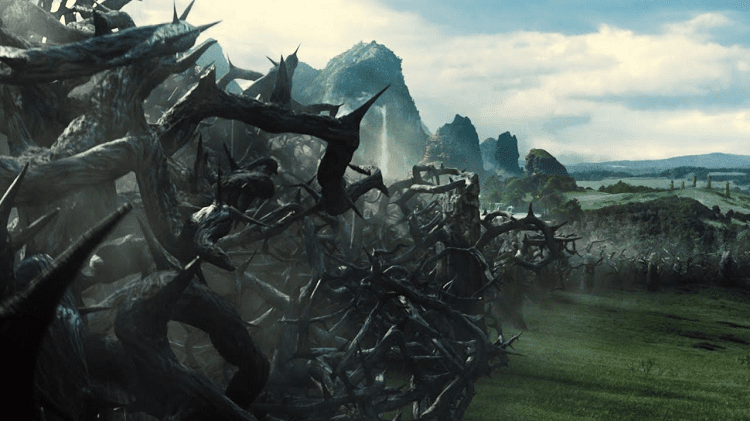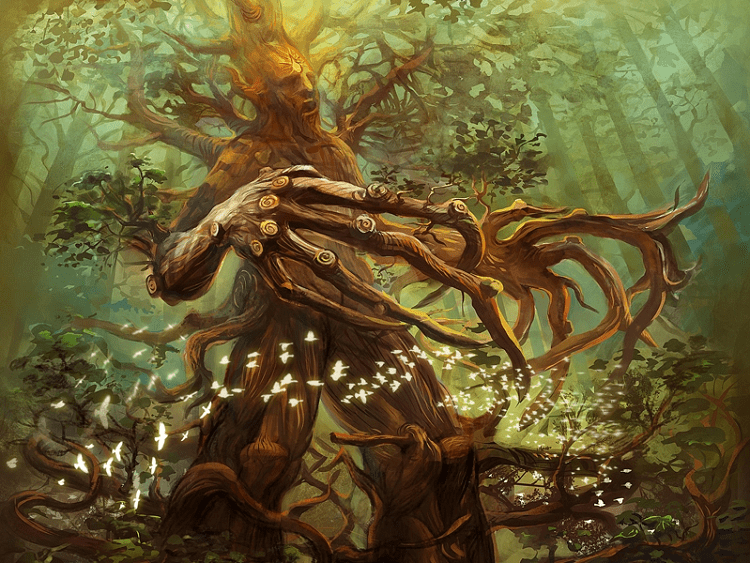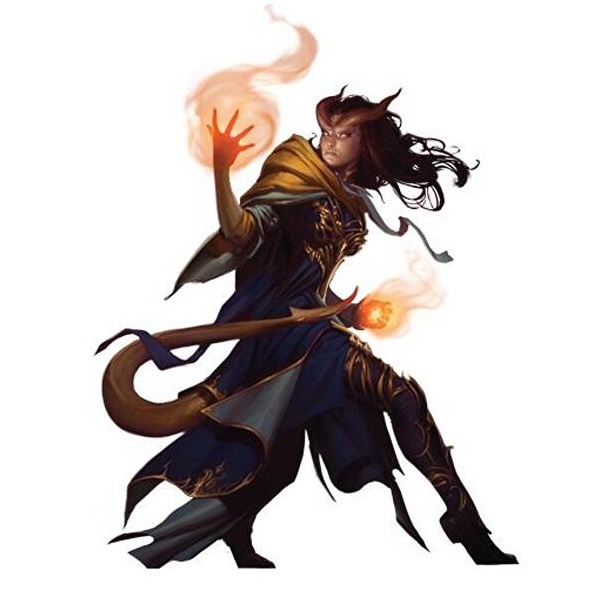Spells in Dungeons and Dragons have changed since Gygax introduced the game in 1974. From simple spells like Magic Missle to older and complex spells like Combine.
These magic effects undergo many changes and adaptations to newer systems and implications. They even change the spell casting system through the years, and alongside it, the world of the Forgotten Realms has also changed.
While I can’t say that I have been playing since the invention of D&D, I can say that I have been playing for a decade, from 3rd edition to 5th edition. I have seen the progression of spells and spell systems, so when it comes to the 5th edition, its spells are familiar to me.
From utility spells to combat spells to out-of-combat spells, there are many options for your caster to choose from, and this article will detail one of these spells specifically.
Join me as in this Spike Growth 5e guide as I discuss one of the more niche control spells in the game: Spike Growth.
Spike Growth Effect
| Casting Time | 1 Action |
| Range | 150 Ft |
| Target | A 20-foot radius centered on a point within range |
| Components | V, S, M, (seven sharp thorns, or seven small twigs sharpened to a point) |
| Duration | Up to 10 Minutes; Concentration |
This spell creates a field of thorns and prickly plants centered on the point the caster designates. That area becomes Difficult Terrain for the Duration. When a creature moves into or is in the area, they take 2d4 piercing damage for every 5 ft of movement traveled within the area.
The transformation of the ground is camouflaged to look natural. Any creature that can’t see the area when the user cast the spell must make a Wisdom (Perception) check against your spell save DC to recognize the terrain as hazardous before entering.
So, this spell is one of the more unique spells in D&D in the sense that it does damage without fail. Sure, it is concentration, but as a 2nd level spell, it does pose an interesting situation as it can block off entire swaths of areas.
On top of that, it technically scales with distance traveled, so faster enemies are forced to take it slow or take a long way around to avoid damage.
Origin

This spell originates from the 2nd edition with the same name. Spike Growth back then was functionally the same as it is now, a spell that created an area similar to planting caltrops over it.
It slowed enemies down and dealt some additional damage along the way. It was a 3rd level spell instead of 2nd and had the other requirement of plant growth in the area where it would be cast.
If they fail the saving throw, they are afflicted by a slow movement speed that lasts 24 hours rather than a terrain that halves movement.
The spell also is practically undetectable unless the target has true sight or magical aids that have a similar effect. The kicker is that if they do not have it, the results of this spell are entirely invisible. When they take damage from traveling in the terrain, they are not sure as to the source of the damage. Insane, I would say.
It was later ported to the 3.5th edition of D&D, still being called Spike Growth; however, there were many changes made to this spell:
- It did not have a spell level anymore, but rather Players learned it at the 3rd level for Druids or 2nd level for Rangers.
- It was allowed to be cast in any terrain now except for ice, desert, stone, and open waters.
- They allowed the movement speed slow to be cured by bandaging it along with magical healing methods.
They added a DC to find the Spike Growth; with it being DC28, it was considered very high at that time. The damage the spell did was lower than it used to be, but considering the buffs it received, it was pretty worth it.
Overall it is interesting to see how the spell changed over time, especially since the addition of difficult terrain made this spell much more impactful in combat and out-of-combat rather than as a straightforward injury that can be healed.
What Classes can Cast it?
Nature-based magic casters can only cast this nature-centric spell; even wizards boasting their high spell pool cannot learn this. Given that it is a 2nd level spell, its effects are pretty defining for a casting class.
Druids
With druids, it is understandable that they have spells that control the field. Commanding nature is no simple feat, and with most of their spells being concentration, they can only cast them one at a time.
This spell fits into that as a 2nd level spell since it encourages plant growth at an expedited rate. Summoning thorn and spiky shrubs are much simpler than creating storms or summoning dragons.
They gain access to this spell at level 3, and if you belong to the Circle of Land, you get it automatically upon hitting level 3. So it does not even take up a spell slot to learn it.
Rangers

Get this spell at level 5, given that they are half-casters compared to Druids, who are full-casters. So rather than this being their main option in battle, it is more of a supplementary ability that they have the opportunity to use.
Rangers are themed in a way that makes these “spells” more akin to “tricks” they pick up to help along the way. So once they have picked the spell, they can only change it out on level up.
They can cast these spells and prepare traps at leisure if they have enough time to prepare before a battle. Especially if this is an ambush, Spike Growth is a great way to wake up sleeping opponents.
Warlock
Specifically, Genie Warlocks have access to the spell if they are Dao Genies. Earth elementals give the Warlock spells that manipulate the earth, either protecting it or causing it to defend itself.
Achieved at level 3, these warlocks must follow the whims of their Genie, and in return, they are given great otherworldly powers.
Is it Good?
On paper, the skill looks rather bland, and it is just a skill that creates spikes that slow enemies and deals some damage, right? Well, this spell is much more than meets the eye, and I would say it is one of the most potent 2nd level spells in the game.
While yes, it does not do damage instantly, it does do damage consistently and without having to make a roll. It also applies a slow on the terrain, decreasing everyone’s movement speed while walking on it by half.
Not every creature can fly, and not all campaigns take place underwater, so this spell will always be active and able to cast.
Enemies need to approach you to attack you, and even if they have a range option, you can shoot, then go prone to give them a disadvantage. Since dropping to prone is free and standing from prone is half your movement, you will never run out of movement to do this maneuver.
Let’s get into a comparison between this and other 2nd level spells. For the following example, I will be using one spell from the Druid list and one from the Ranger list.
Comparison

Pass Without Trace: a powerful spell for out-of-combat usage; you can even use it to avoid combat scenarios by sneaking through them. It lasts for one hour and takes one action to cast; it also casts it over a 30-foot radius targeting any creature within it that you choose.
This spell erases all traces of passage and even silences the noises you make to a certain extent. So long as you do not break stealth, it makes sure that even the noisiest Paladin can remain hidden.
This spell provides much more utility than Spike Growth and can be used in more situations. From in-combat to out-of-combat, this spell sees a lot of use; You can even use it to create a short rest situation if you are well hidden (and if the DM allows it). So I would rate this equal to or more substantial than most 2nd level Druid Spells.
Another 2nd level spell is Warding Wind. While this spell is on the weaker side of the 2nd level, it still has its niche uses. This spell is an action to cast and produces many different effects, from creating a Deafening gust to snuffing torches and fires, to creating difficult terrain and more.
What holds this spell back is that it is concentration, so someone attacking you or if you want to cast a different concentration spell means ending the effects of this one.
Compared to Spike Growth, it does not discourage attacking you and, aside from ranged attacks, does not do anything from a sword being swung at you. Of course, this spell also has its merits in a ranged battle as it creates a barrier of wind that slows projectiles.
Many impactful spells reside in the 2nd level, but most of their usage requires out-of-the-box thinking. Others, of course, are simple to understand, such as Hold Person or Lesser Restoration.
These are usually the power spike spells acquired when full-casters hit level 3. So let’s look at the damage to see why I consider Spike Growth one of the best 2nd level spells.
The Number Behind the Damage
Spike Growth’s damage is 2d4 piercing. So on average, that does five damage per 5 ft of movement. Since the area-of-effect is a 20 ft radius or 40 ft diameter, assuming one creature has to move straight through the circle, they take 16d4 or 40 damage without a chance of rolling.
2d4(damage) *40/5(distance traveled)= 16d4(40 on average) and that’s just for one creature!
Of course, you rarely get a perfect setup, such as a narrow corridor or an enclosed space. So even if it does half (assuming you summon it centered on an enemy), it is still 20 damage. That’s enough to defeat a Bandit!
When things don’t work out, there are always ways to make sure that this spell still does some damage, and here are a few methods that can take advantage of the spell.
Combos

Druids naturally have ways to move enemies; from Thorn Whip to Gust to Thunderwave, you can force enemies to move through the terrain to take additional damage.
While enemies cannot be charmed into hurting themselves (usually), they are susceptible to being grappled and dragged through the terrain. An Enlarge or Reduce paired with a strong grappler makes the enemies unable to resist the damage from this spell.
I am sure there are many other methods of comboing this spell, but these are accessible earlier in the game, so anyone can get it and start working with it.
FAQs
Question: Does Spike Growth go through Walls?
Answer: No, Spike growth will spread out in an area until it reaches a wall, even if the other side of the wall is still within its natural radius. Spells will specify if they can go around walls and corners, for example, Fireball.
Question: Does Spike Growth do Magical Damage?
Answer: Yes, Unless otherwise specified, spells do magical damage even when the damage type is Slashing, Bludgeoning, or Piercing.
Question: Can You Burn Spike Growth?
Answer: Technically, no. Rules as Intended, this spell is meant to create a difficult magical terrain made of plant thorns and shrubs. Rules as Written, however, state that the plants are grown exponentially, not magically enchanted to prevent destruction, so technically, they would be as burnable as regular lively plants.
Jeremy Crawford, who addresses most of the technical D&D interaction questions, has stated that it was not “Intended” to be burnable, so you can take that as you will.
Spike Growth 5e Guide: Final Thoughts
I think this spell is powerful in the right hands and still crazy strong even when used inefficiently. I highly recommend taking it as a Druid and a little less as a Ranger unless you know there will be times to prepare for a fight.
I would rate this spell in the top five for Druid spells at 2nd level and around the top ten compared to all second-level spells. Give it a shot and watch those creatures get shredded by thorns.
- Prestige Classes 5e Guide - September 20, 2022
- Rod of the Pact Keeper 5e Guide - September 15, 2022
- Sanctuary 5e Guide - September 14, 2022



